I feel that we are currently in a golden age for cocktails.
Every combination of spirits, syrups, and ingredients you can think of are being pushed to their absolute limits, with bars such as The Aviary equalling the informed culinary experimentation of many contemporary Michelin-starred restaurants. However, as a bartender who’s also an aspiring sommelier, I find there’s often one colour still missing from the palette: tannin.
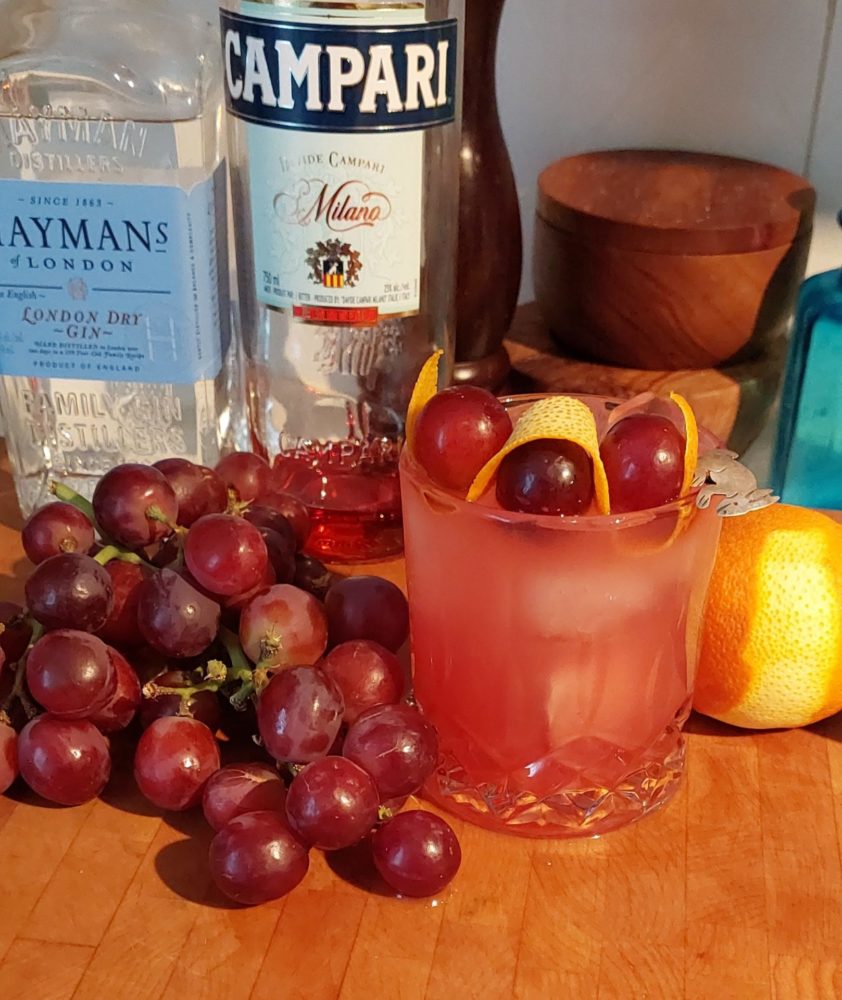
As you can see from the state of my Campari, I make quite a few Enzonis. Also excellent with green grapes and a lemon swath.
The moment that put that particular lightbulb over my head was the first time I tried a cocktail called the Enzoni.
Created by Vincenzo Errico of the Milk & Honey fame (nearly every single one of my all time favourite cocktails have come out of this bar), it’s an ingenious take that marries the Gin Sour spec and the Negroni (and also has an excellent fall variation with Rye Whiskey), subbing out the Sweet Vermouth for lemon and whole table grapes. Muddling the grapes in the tin and applying a hard shake extracts a discernible amount of tannin from the skins. The resulting cocktail is plucky, satisfying, and lip smacking. The tannins add a new dimension of tension and texture, and ever since I’ve been trying to put tannins in my cocktails as often as I can manage.
It would be wrong of me, however, to say that cocktails with tannin are uncommon. Tea syrups and infusions have been gaining traction since legendary ginslinger Audrey Saunders placed her Earl Grey MarTEAni on the menu at Pegu Club in New York. As an ingredient, tea is in somewhat of a renaissance, a frequent ingredient in one of modern cocktails progenitors, the humble punch. Tea leaves, especially black ones, contain a potent amount of tannin, about double the amount in coffee (more on that later).
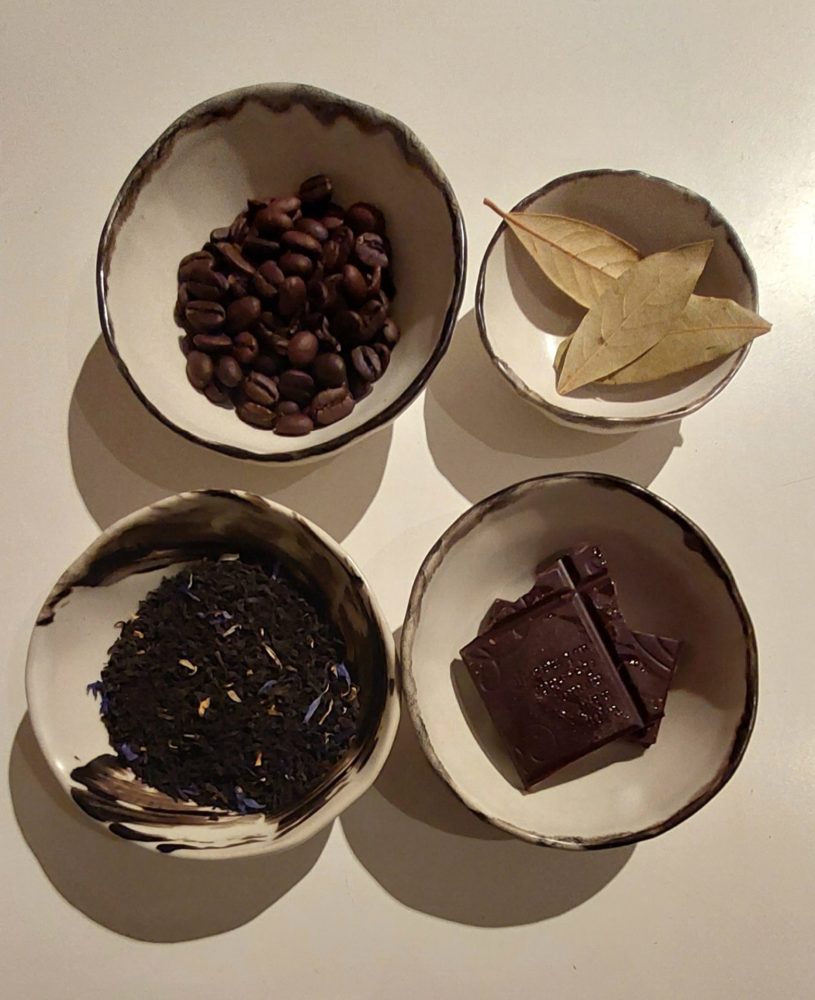
Coffee, bay leaves, Earl Grey tea, and dark chocolate, all tannic to different degrees.
In fact, there’s another tannic leaf that just about everyone uses, but seldom understands.
The humble bay (laurel) leaf adds a tannic smack to many a soup and stew out there, and works excellently for the same reasons in a drink. My fellow bartender, Jarrett Callan, introduced me to the concept of using very heavily spiced bay leaf syrups, especially in spirit-forward cocktails. I’ve had a personal issue with the speed I drink cocktails, they mysteriously seem to disappear from my glass just as soon as I’ve been given one, but with red wines (especially on the bigger [more muscular] side), I always tend to spend a long time with them. It’s pretty simple to see why as tannins have a cumulative effect in the mouth, and even a wine with medium tannins will eventually overwhelm you if you drink enough too quickly. Introducing tannic infusions or syrups into darker, slow sipping cocktails, like Old Fashioneds or Manhattans, gives them more dominance and sticking power in the mouth (literally).
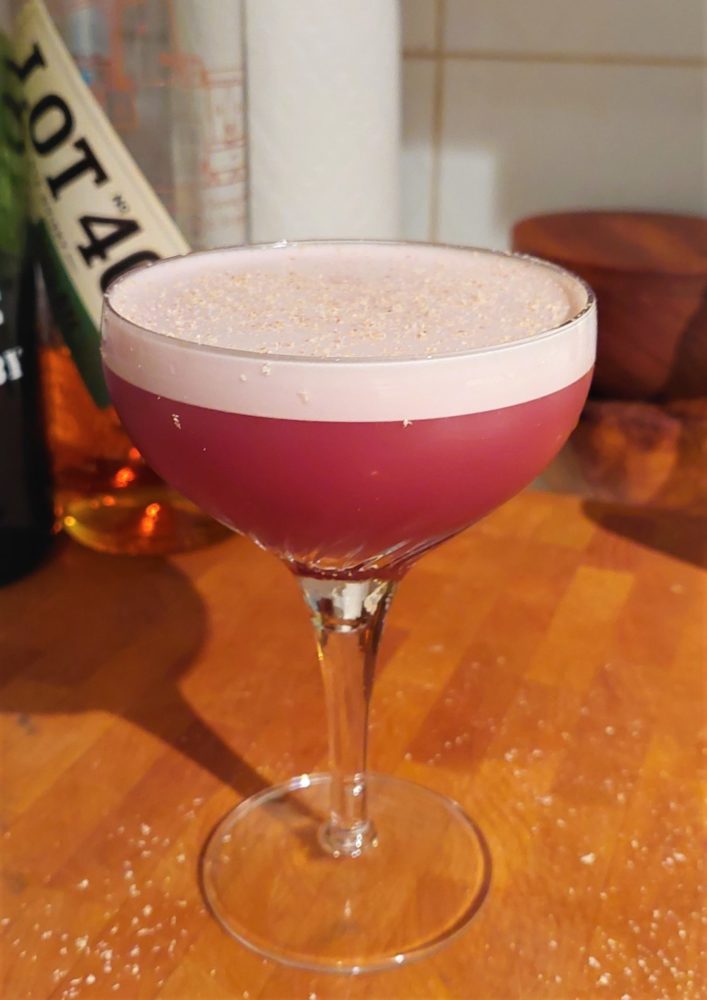
The Elk’s Own, my dearly beloved.
Finally, I can’t write this article without discussing the New York Sour, as it was inevitable. To me, this is the most well known cocktail that makes use of red wine, and for good reason, as there’s some serious synergy at work in it. The powerful notes of oak (especially American oak) that have become the obsession for many a winemaker and drinker are one of the most defining characters of Whiskey, especially Bourbon, and the wine brings fruit, acid, and most important of all, structure.
Another wine variation of the Whiskey Sour spec that’s frequently in my home shaker is the Elk’s Own, calling for ruby Port, Rye Whiskey, Demerara syrup, lemon, egg whites, and nutmeg. I highly recommend making yourself one now while the air’s still chilly. I purposefully left mentioning wine cocktails until the end, as it’s the obvious addition to bring tannin to a cocktail, but the beauty of a cocktail is its ability to sum so many different parts. There’s a whole world of tannins out there still waiting to be explored.
Tannin is everywhere already in cocktails, but it’s not truly acknowledged, their usage being often incidental rather than intentional. The potential for tannin structure in cocktails is barely being tapped; for me it feels like when I first discovered the concept of umami, like I’d been given a missing piece of the gastronomic puzzle.
The tannins in roasted coffee, and dark chocolate are shoe-ins for rich, slow burning cocktails, and I dream of a truly bitter and tannic chocolate or coffee liqueur that I can use almost as an Amaro in a mix.
Nothing defines the modern cocktail movement more than forever pushing boundaries, and in my personal cocktail journey, considering tannin as one of the basic structural and textural elements is the way of the future.

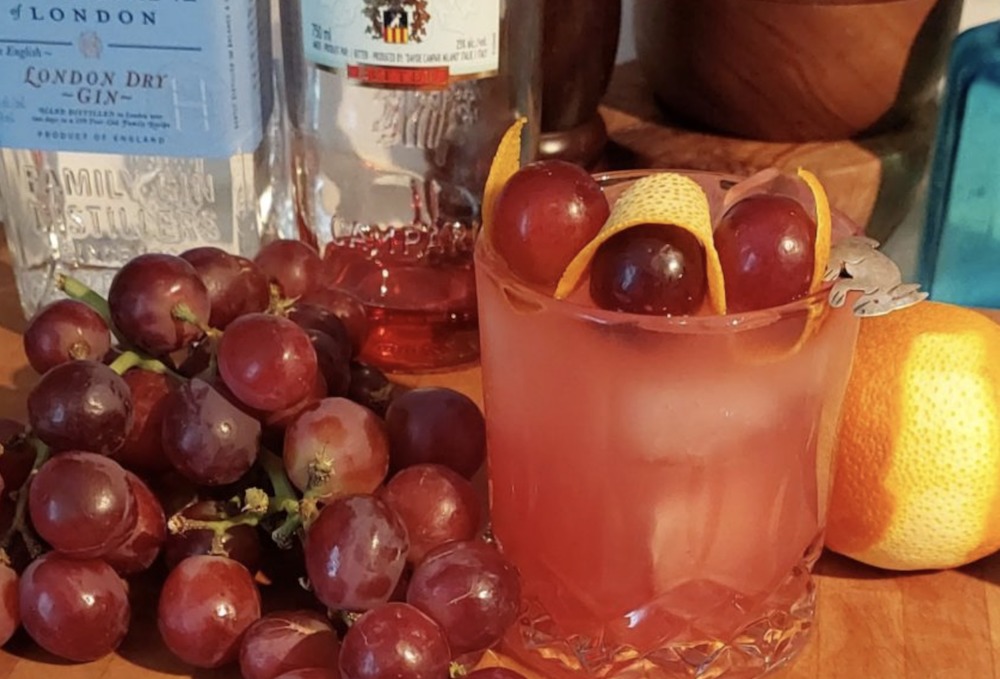

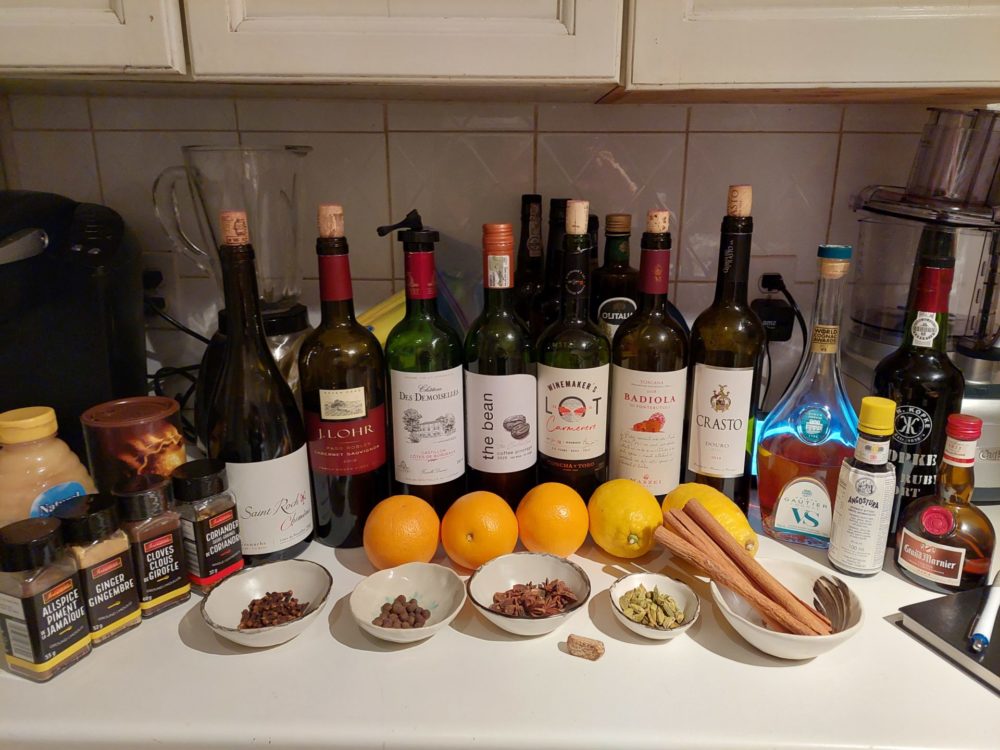
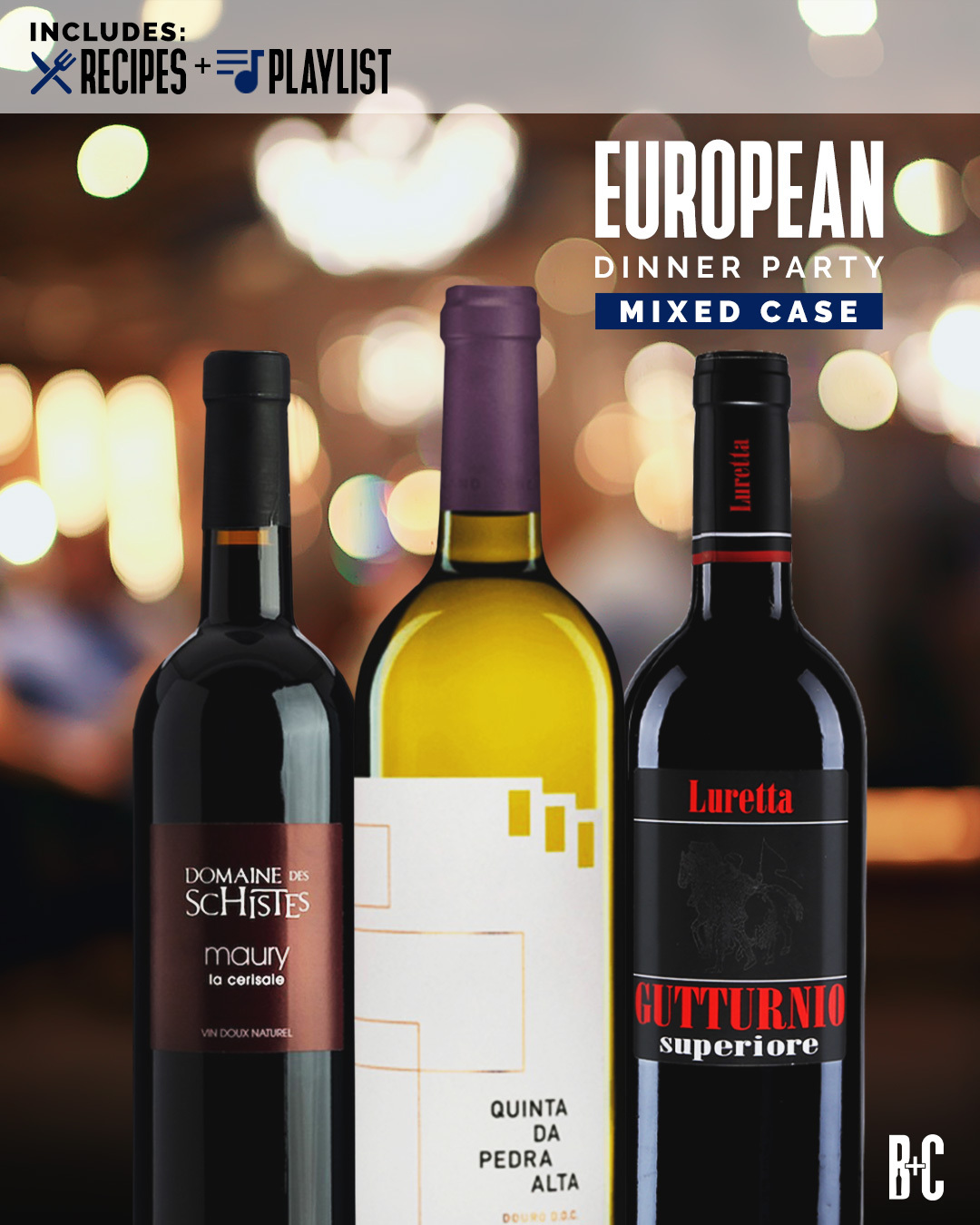
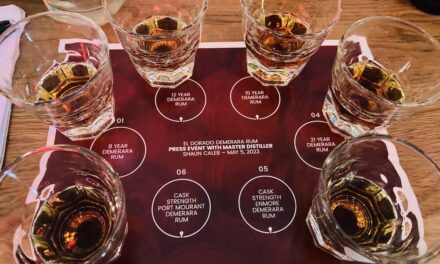
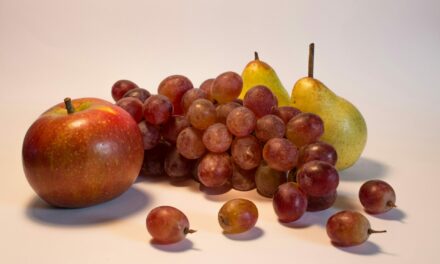

I’m currently researching tannin in cocktails as well since my restaurant does a cocktail pairing with our tasting menu. Wood aged spirits already contain tannin from their aging in oak, so I’m really wondering how to introduce tannin without really introducing flavor. I’ll let you know if I discover anything interesting!